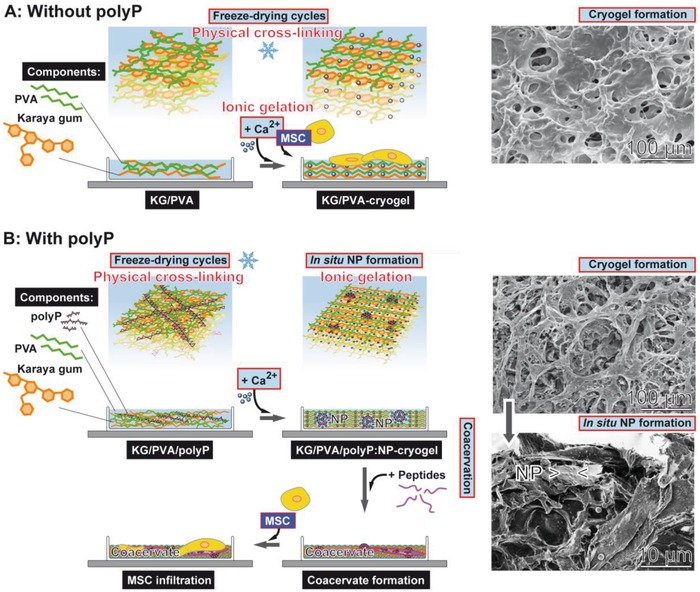Figure 15.

Formation of porous KG‐PVA hydrogel based on physically cross‐linked PVA (during the freezing‐thawing process) and on ionic gelation of KG (scheme flanked with SEM images on the right panel). A) Formation of the cryogel in the absence of polyP. The resulting material is porous (SEM insert). After further processing with Ca2+ a porous “KG/PVA‐cryogel” is formed that allows the MSC to attach. B) If Na‐polyP is added together with KG and PVA and subsequently processed by freeze‐thawing, the physical cross‐linkage of the PVA matrix occurs. The subsequent exposure to Ca2+ causes cross‐linkage of the KG under formation of the hybrid KG/PVA cryogel by ionic gelation (upper SEM image in panel B). In parallel 100–150 nm large Ca‐polyP nanoparticles (NP) are formed in situ that appear abundantly on the KG‐PVA matrices (lower SEM image in panel B). After lyophilization the material is stable and can be stored. If transferred to medium/serum the polyP‐containing cryogel, “KG/PVA/polyP:NP‐cryogel”, allows the nanoparticles to undergo coacervation; this matrix provides the MSC a suitable matrix to adhere and also to infiltrate into the cryogel.
